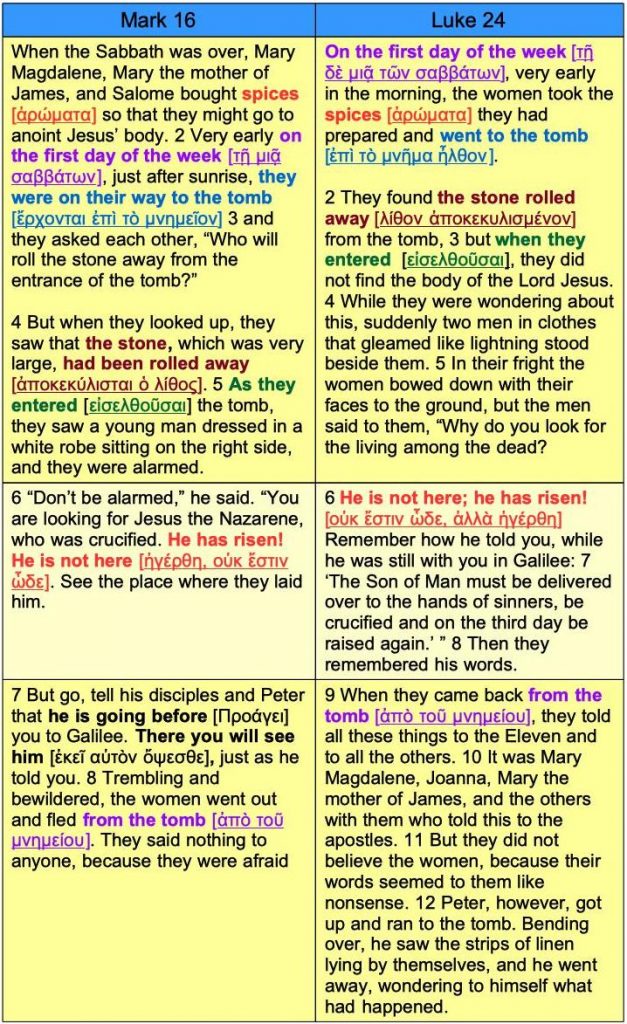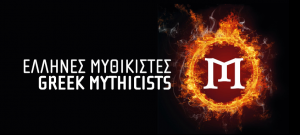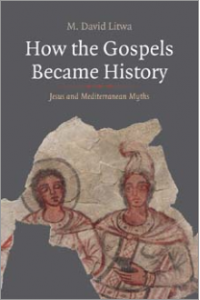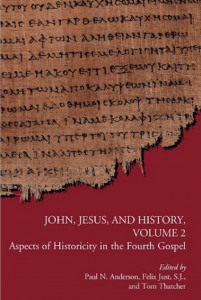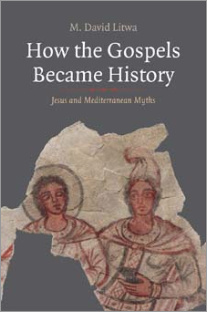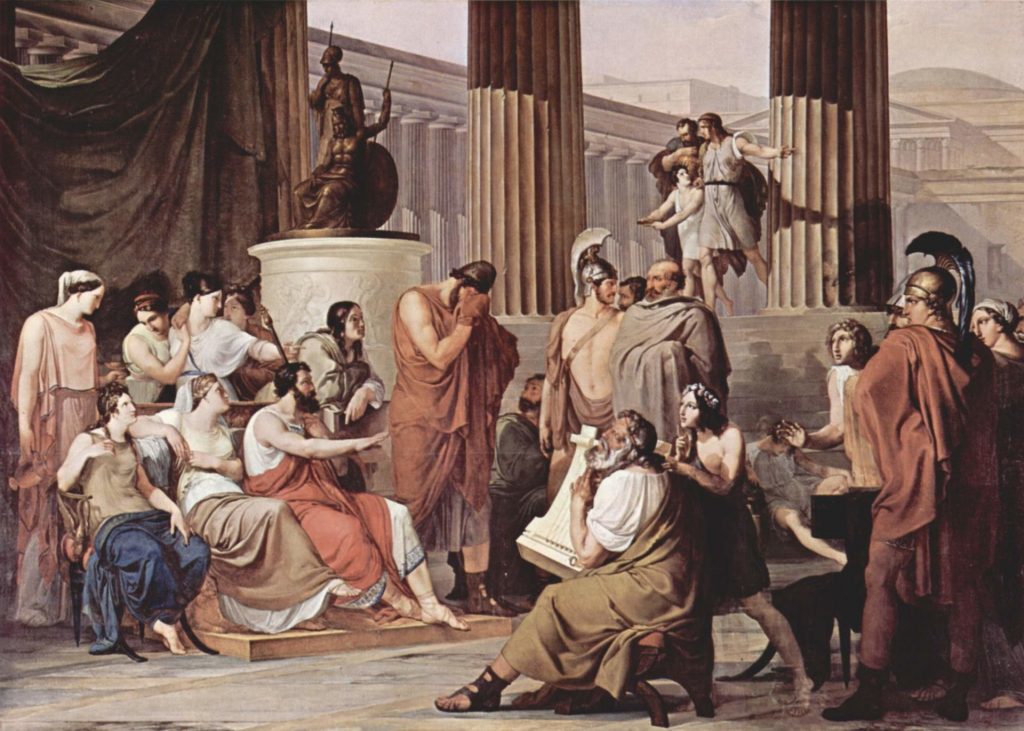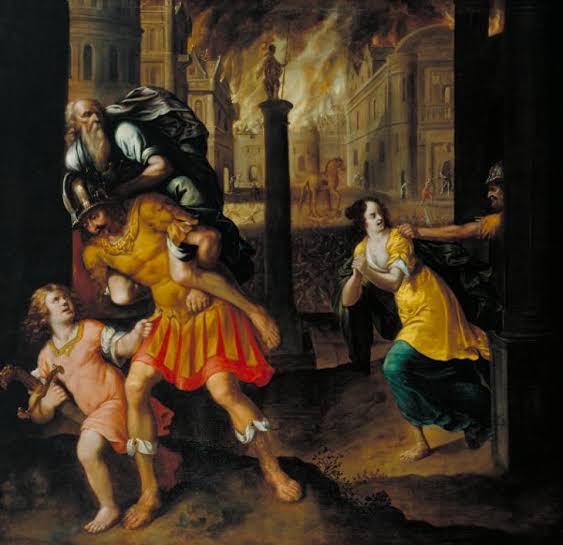A little detail in the previous post has kept me awake at night (maybe as long as a minute), wondering. It is Matthew 28:18-19
Then Jesus came to them and said, “All authority in heaven and on earth has been given to me. Therefore go and make disciples of all nations . . .
Why hadn’t I noticed before now the link Jeffrey Peterson makes with Daniel 7:14?
He was given authority, glory and sovereign power; all nations and peoples of every language worshiped him. His dominion is an everlasting dominion that will not pass away, and his kingdom is one that will never be destroyed.
The connection brings me back to a question that keeps coming back to me: Is it possible that the apocalyptic prophecy we read Jesus pronouncing in Mark 13 and Matthew 24 was couched in metaphor that only the “spiritually blind” would mistake for literal meaning. The language was taken from the prophets. Isaiah 13 portrays the fall of Babylon in terms of the darkening of the sun, moon and stars. The cosmic images were metaphors. They were “fulfilled” when the city fell to enemy forces. David speaks of God coming down to earth in clouds to rescue him from certain death at the hands of his enemies. I don’t believe the psalmist expected anyone to read of God’s descent to earth literally any more than we are to imagine literal “cords of death” binding the psalmist or to believe that the psalmist was literally in “deep waters”. Psalm 18 . . .
4 The cords of death entangled me;
the torrents of destruction overwhelmed me.
5 The cords of the grave coiled around me;
the snares of death confronted me.
6 In my distress I called to the Lord;
I cried to my God for help.
From his temple he heard my voice;
my cry came before him, into his ears.
7 The earth trembled and quaked,
and the foundations of the mountains shook;
they trembled because he was angry.
8 Smoke rose from his nostrils;
consuming fire came from his mouth,
burning coals blazed out of it.
9 He parted the heavens and came down;
dark clouds were under his feet.
10 He mounted the cherubim and flew;
he soared on the wings of the wind.
11 He made darkness his covering, his canopy around him—
the dark rain clouds of the sky.
12 Out of the brightness of his presence clouds advanced,
with hailstones and bolts of lightning.
13 The Lord thundered from heaven;
the voice of the Most High resounded.
14 He shot his arrows and scattered the enemy,
with great bolts of lightning he routed them.
15 The valleys of the sea were exposed
and the foundations of the earth laid bare
at your rebuke, Lord,
at the blast of breath from your nostrils.
In the trial before the priests Jesus declares that the high priest will see the “second coming” or the coming of Jesus as the Danielic Son of Man. Matthew 26:63-64 . . .
The high priest said to him, “I charge you under oath by the living God: Tell us if you are the Messiah, the Son of God.”
“You have said so,” Jesus replied. “But I say to all of you: From now on you will see the Son of Man sitting at the right hand of the Mighty One and coming on the clouds of heaven.”
I am pretty sure that the priest was dead before the fall of Jerusalem in 70 CE.
What were the authors of the gospels of Mark and Matthew thinking? It’s probably worth keeping in mind that not even the author of Daniel thought of his scenario of a heavenly Son of Man coming in clouds before the Ancient of Days was was a literal event. That was a metaphor for the rising up of the Maccabean kingdom on earth.
I think it’s as if they were thinking that the coming of the kingdom of God was ushered in with the death and resurrection of Jesus. Matthew 28 seems to assure us of this interpretation when we read there that Jesus announces, in effect, that he is the Son of Man who has from that point on been given the power and authority to lead his appointed apostles in beginning to bring in more converts to his kingdom.
The Pauline epistles likewise speak of Christ victory over the cross representing the victory over the demon-ruled cosmos. The demons in Mark and Matthew knew their days were numbered the moment they saw Jesus appear in Galilee. Some Church Fathers also spoke of Christ “reigning from the cross”.
Paul’s letters — all of the NT letters — speak of a coming of Christ, never of a “second coming”. The first evangelists to weave together a story of the Son of Man out of the verses of the Jewish Scriptures and other literary and imperial allusions likewise spoke of his coming as the critical event. (I have coloured the passage in Psalm 18 that one might relate directly to classic baptism scene of Jesus in Mark and Matthew.) If his arrival in Galilee marked the “nearness” of the time then the empty tomb was the sign that that time had begun. Is there any room at all for a “second coming” in the original tale?
But this interpretation raises as many questions as it seems to resolve. As I said, it sometimes keeps me awake at night . . . for a moment, sometimes.

